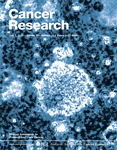Cancer Res:CXCR3+调节性T细胞参与卵巢肿瘤免疫抑制
2012-07-19 songbo 生物谷
7月12日,Cancer Res杂志报道一类CXCR3+调节性T细胞参与卵巢肿瘤的免疫抑制,这或许成为肿瘤免疫治疗的一个新的靶点。 抗肿瘤的I型T细胞反应,涉及IFN-γ的产生是控制癌症的关键,但这种反应的效率受多种免疫抑制机制的限制。这些抑制机制可促进肿瘤免疫逃逸。其中一项免疫抑制机制涉及FOXP3+ 调节性T细胞(Treg)的积累。这类抑制性T细胞可防止过度免疫反应造成的组织破坏。 最近的
7月12日,Cancer Res杂志报道一类CXCR3+调节性T细胞参与卵巢肿瘤的免疫抑制,这或许成为肿瘤免疫治疗的一个新的靶点。
抗肿瘤的I型T细胞反应,涉及IFN-γ的产生是控制癌症的关键,但这种反应的效率受多种免疫抑制机制的限制。这些抑制机制可促进肿瘤免疫逃逸。其中一项免疫抑制机制涉及FOXP3+ 调节性T细胞(Treg)的积累。这类抑制性T细胞可防止过度免疫反应造成的组织破坏。
最近的研究显示,FOXP3 +调节性T细胞包括不同亚群,分别发挥不同的功能。特别是CXCR3+ Treg细胞,已被证明特异性地控制体内的I型T细胞反应。本研究发现,CXCR3+ Treg细胞高度富集于人类卵巢癌,特别是在实体肿瘤中,它们是Treg细胞的主体。
体外实验中,肿瘤相关CXCR3+ Treg细胞共表达T-bet,但不分泌γ-干扰素,也不抑制细胞增殖和T效应细胞的γ-干扰素分泌。此外,它们共表达Helios (Helios是人类胸腺衍生FOXP3 +调节性T细胞的标记),表明它们从天然调节性T细胞起源。最后,科学家证实CXCR3+调节性T细胞在肿瘤部位的比例与CXCR3+T效应细胞直接相关,与CXCR3的配体表达一致。总之,本研究结果支持这一概念,天然CXCR3+/T-bet+调节性T细胞选择性积聚在卵巢肿瘤组织中,控制I型T细胞反应,导致对有效抗肿瘤免疫的抑制。

doi:10.1016/j.cell.2011.10.017
PMC:
PMID:
CXCR3+ T regulatory cells selectively accumulate in human ovarian carcinomas to limit type I immunity
Nassima Redjimi1,Caroline Raffin1,Isabelle Raimbaud1,Pascale Pignon1,Junko Matsuzaki2,Kunle Odunsi2,Danila Valmori1,*, andMaha Ayyoub
Anti-tumor Type I T cell responses involving IFN-γ production are critical to control cancer, but the efficacy of this response is limited by a variety of immunsuppressive mechanisms that promote tumoral immune escape. One critical mechanism involves the accumulation of FOXP3+ T regulatory cells (Treg), a class of suppressive T cells that prevent excessive tissue destruction caused by unchecked immune responses. Recent studies have revealed that FOXP3+ Treg include distinct subsets specifically controlling over the corresponding effector subset. In particular, CXCR3+ Treg have been described as a subset specialized in the control of type I T cell responses in vivo. Here we show that CXCR3+ Treg are highly enriched in human ovarian carcinomas, particularly in solid tumor masses, where they represent the majority of Treg. Tumor-associated CXCR3+ Treg co-express T-bet but do not secrete IFN-γ ex vivo and suppress proliferation and IFN-γ secretion of T effectors. In addition, they co-express Helios, suggesting that they originate from natural Treg. Finally, we show that the proportion of CXCR3+ Treg at tumor sites is directly correlated with that of CXCR3+ T effectors, consistent with expression of CXCR3 ligands. Together, our findings support the concept that natural CXCR3+ T-bet+ Treg selectively accumulate in ovarian tumors to control type I T cell responses, resulting in the collateral limitation of efficient anti-tumor immunity.
本网站所有内容来源注明为“梅斯医学”或“MedSci原创”的文字、图片和音视频资料,版权均属于梅斯医学所有。非经授权,任何媒体、网站或个人不得转载,授权转载时须注明来源为“梅斯医学”。其它来源的文章系转载文章,或“梅斯号”自媒体发布的文章,仅系出于传递更多信息之目的,本站仅负责审核内容合规,其内容不代表本站立场,本站不负责内容的准确性和版权。如果存在侵权、或不希望被转载的媒体或个人可与我们联系,我们将立即进行删除处理。
在此留言








#CXCR3+#
67
#卵巢肿瘤#
65